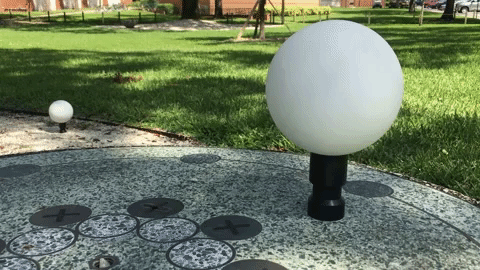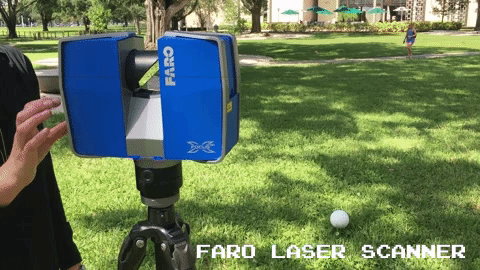By: Lyndsay Brunstetter
The Access 3D Lab at the University of South Florida is making strides in technology, specifically when it comes to 3D printing and laser scanning.
The FARO Laser Scanner creates 3D digital models of historical sites. Natural disasters and bombings have damaged some of these sites. The scanner can digitally recreate these sites and items to preserve it for generations to come.
Laura Harrison is the director of Access 3D Lab. The Access 3D Lab recently scanned the inside and outside of the historic Tampa Heights building that now houses Lee’s grocery. It’s been around since 1884. The purpose of this project is to preserve the legacy of Lee’s grocery by creating a 3D digital model.
“We are planning to incorporate the data we have recorded into maps of Tampa that have often overlooked it,” said Harrison.
Lee’s Grocery store was built 134 years ago. It offered affordable goods to the local community of migrant workers. A few years ago, it was converted from a local grocery store to a pizzeria and craft beer shop. The new owners kept the original name because it meant so much to the Tampa Bay community and wanted to do it justice.
 Courtesy of Access 3D Lab
Courtesy of Access 3D Lab
“Ultimately, we want to increase public awareness of it in hopes of offering virtual tours in the future,” said Harrison.
The Faro Scanner scans in two separate phases. The first phase captures points of the area. When the laser reaches something solid like a desk, the laser stops traveling and marks a point. The scanner picks up everything that it sees. Numerous solid white spheres are placed across a surface in a geometric shape which connects the points. The second phase involves pressing the start button and letting the scanner take HD pictures automatically. These two phases are then placed on top of each other to create a 3D color model.

More scanners can be placed around the building to speed up the process.
“This type of work is normally done in a variety of fields such as forensics and architecture,” said Harrison.
As a result, all different kinds of built environments, historical landscapes, architectural buildings can be created into interactive 3D visualizations.
According to the makers of the FARO Scanner, this product has more technological features than any pre-existing scanners. Features include: touch screen capabilities, an eye-safe laser, noise reduction, 4.5-hour battery life, and can also scan objects up to 330 meters away in direct sunlight.

Touch screen capabilities offer the ability to look at the physical images in more detail. The scanner provides eye-safe protection because it says how far to stand away from the laser in the setting mode. Reduction of noise in the picture has improved. The battery life wasn’t as long before, and this scanner’s range of distance has increased by 20 meters.
This laser scanner is also portable which means that this is ideal for world travelers in hunt of their next historical site.
The goal of Access 3D Lab is to use digital resources such as terrestrial laser scanning to enhance research and learning at USF and beyond.
“Going into those spaces with terrestrial laser scanners, we can bring knowledge, accessibility, and engagement to wider audiences because the general public would not be allowed to go,” Harrison said.